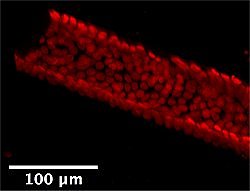Washington, 1 fev (EFE).- Um grupo de cientistas descobriu que os altos níveis de uma proteína nas células cancerígenas são um indicador "confiável" de que o câncer irá se propagar pelo organismo humano, segundo um estudo publicado nesta terça-feira no periódico "Journal of Clinical Investigation".
Os pesquisadores - pertencentes aos Institutos Nacionais da Saúde dos EUA (NIH, na sigla em inglês) e à Universidade de Hong Kong - analisaram o material genético da proteína CPE-Delta N dos tumores extirpados cirurgicamente dos pacientes e do material genético dos tecidos circundantes.
Após medir os níveis desta proteína nas células cancerígenas, os pesquisadores conseguiram prever em 90% dos casos se o câncer se estenderia pelo prazo de dois anos.
A proteína CPE-Delta N é uma variante da proteína Carboxipeptidase E, que está normalmente envolvida no processamento de hormônios como a insulina.
Essa descoberta abre a possibilidade a longo prazo de realizar novos testes para avaliar a probabilidade de um câncer se estender, assim como de elaborar um tratamento de prevenção.
A médica E. Peng Loh, da seção de neurobiologia celular do Instituto Nacional de Saúde Infantil e Desenvolvimento Humano dos EUA (NICHD, na sigla em inglês), ressaltou que "é muito importante saber quando um câncer tem o potencial de se propagar" para tratá-lo.
"Atualmente, não há biomarcadores precisos que possam fornecer esta classe de prognósticos. A previsão se determina de acordo com a etapa em que se encontra o câncer", assinalou. EFE




